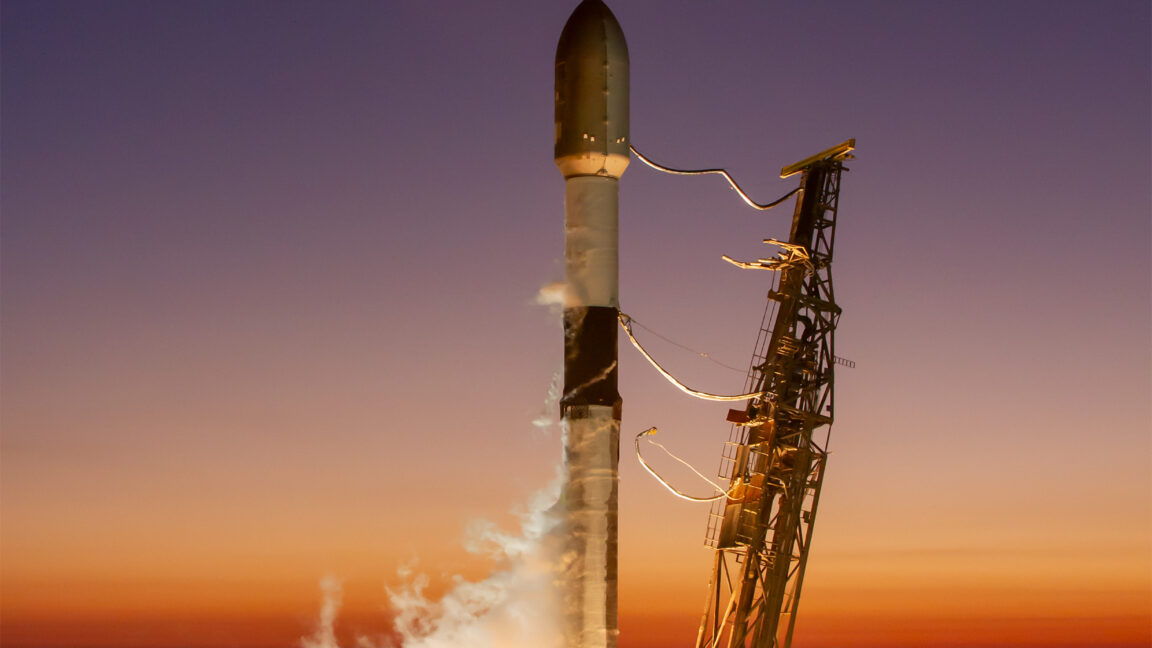The US Space Force's Space Systems Command announced Friday it has ordered nine launches from SpaceX in the first batch of dozens of missions the military will buy in a new phase of competition for lucrative national security launch contracts.
The nine launches are divided into two fixed-price "task orders" that Space Systems Command opened up for bids earlier this year. One covers seven launches with groups of spacecraft for the Space Development Agency's constellation of missile tracking and data relay satellites. The other task order is for two missions for the National Reconnaissance Office, the US government's spy satellite agency.
Two eligible bidders
The parameters of the competition limited the bidders to SpaceX and United Launch Alliance (ULA). SpaceX won both task orders for a combined value of $733.5 million, or roughly $81.5 million per mission. Six of the nine missions will launch from Vandenberg Space Force Base, California, beginning as soon as late 2025. The other three will launch from Cape Canaveral Space Force Station, Florida, a Space Systems Command spokesperson told Ars.
This is the Space Force's first firm order for rocket launches in the so-called Phase 3 round of launch procurements. The Space Force has divided 79 missions for competition in the Phase 3 procurement into two classifications: Lane 1 and Lane 2.
The task orders announced Friday are the first awarded in Phase 3 Lane 1, which is for less demanding launch profiles into low-Earth orbit.
"We are excited to kick off our innovative NSSL Phase 3 Lane 1 effort with two task orders that support critical NRO and SDA missions," said Lt. Col. Douglas Downs, Space Systems Command's material leader for space launch procurement. "Industry stepped up to the plate and delivered on this competition."
There are at least 30 missions in Lane 1 that the Space Force plans to award to launch providers through 2029, primarily to launch hundreds of small spacecraft for the Pentagon's Space Development Agency. SDA is deploying a proliferated satellite constellation designed to detect and track enemy missiles and relay the missile warning data to military units that can shoot down the threats.
These missions require medium-lift rockets, or smaller rockets capable of a high-rate launch cadence to match the capability of a larger launch vehicle. In June, the Space Force selected SpaceX, ULA, and Blue Origin, Jeff Bezos' space company, to compete for Lane 1 launch task orders.
Military officials will add more companies to the pool of available Lane 1 launch providers as they mature their rockets. These companies may include Rocket Lab, Firefly Aerospace, Relativity Space, Stoke Space, and others.
While Blue Origin is on the Space Force's list of available launch providers, the company's New Glenn rocket was not eligible for the contracts announced Friday. That's because military officials require a rocket to complete at least one successful orbital launch to become qualified for a Lane 1 task order. New Glenn's first test flight is scheduled sometime later this year.
This rule left SpaceX's Falcon 9 and ULA's Vulcan rockets as the only launch vehicles eligible for the task orders, setting up a head-to-head competition between the rival rocket companies. SpaceX prevailed, winning all nine Lane 1 missions up for competition this year.
Lane 2 of the Space Force's National Security Space Launch program covers more challenging military missions, typically larger, more expensive payloads destined for higher orbits. The Space Force is expected to soon select launch providers for Lane 2 missions. These launches will require the Space Force to certify the rockets, whereas the military is comfortable accepting a little more risk for the Lane 1 missions.
SpaceX's Falcon 9 and Falcon Heavy are currently certified for national security launches, and the Space Force is in the process of certifying ULA's Vulcan launcher after two successful test flights. The Space Force and Blue Origin also have a certification plan for the New Glenn rocket, but it must first complete multiple successful test flights.
Updated October 19 with additional information about the launch task orders.


